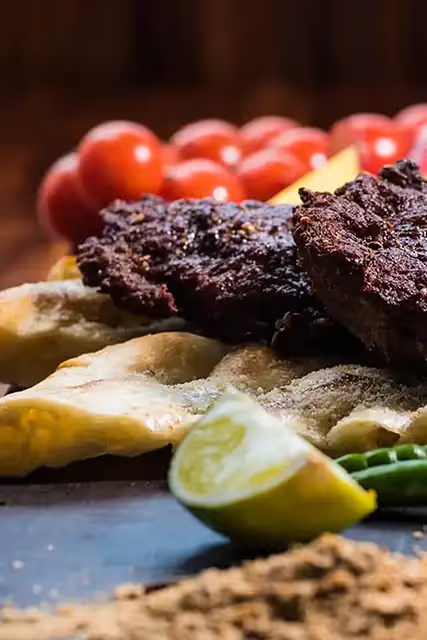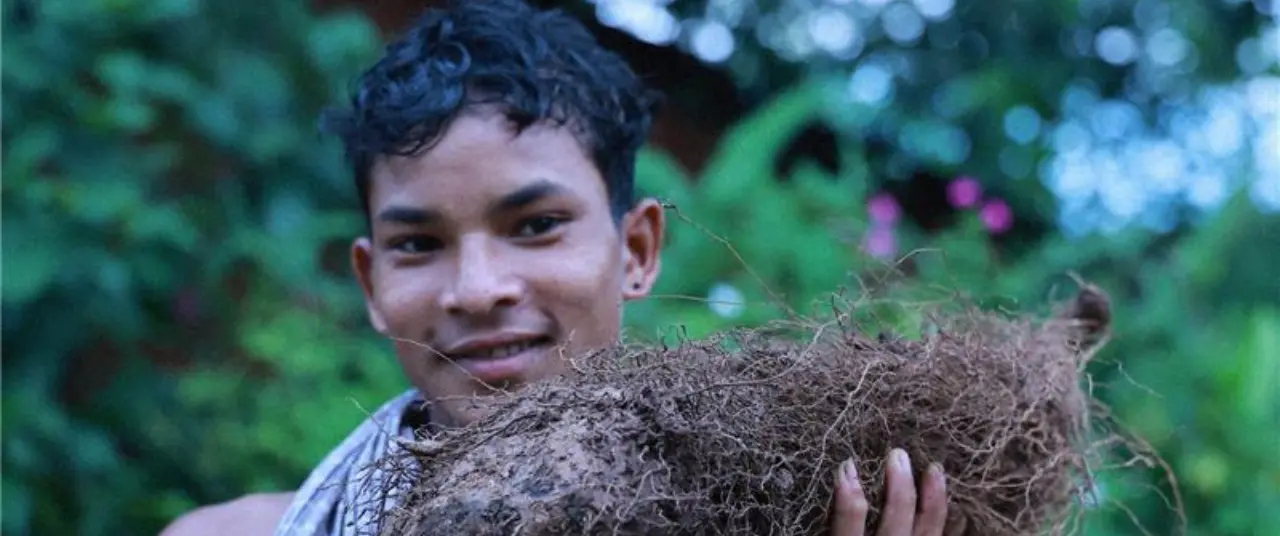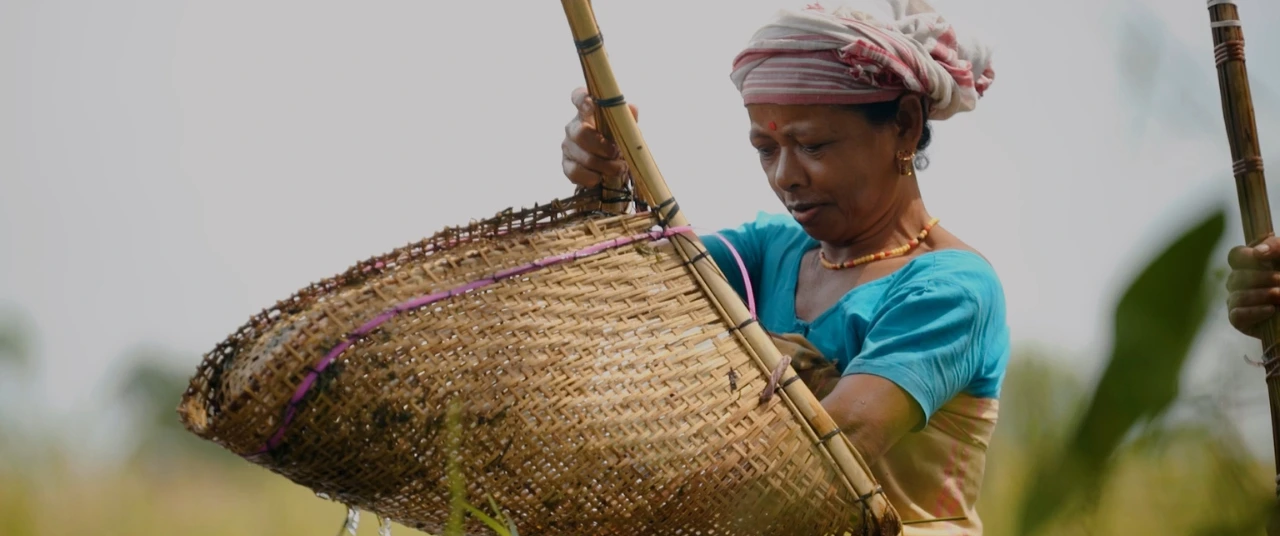A guide to help yourself to help the planet






Rajma, Idli, Chana. Repeat.
Since the green revolution, our plates and palates have shrunk to eat just what is readily available. With the entire country depending on a handful of crops for their nutritional needs, this has had a profound impact on our bodies, ecology, and the soil that grows them.
In the last 50 years or so, more than 1.10 lakh rice varieties have been lost because of multiple factors. First, high-yielding varieties were favoured; second, the onslaught of monoculture began; and third, chemical usage became rampant. The loss of crop diversity has reduced our nutrition and exposed farmers to the vagaries of climate.
Our collective dietary choices can go a long way in fighting climate change, and the rules seem simple enough: eat local, seasonal, and traditional food. Yet, making these choices has never been more challenging. With more choices than we can count from distant lands, much of our food is packaged, laced with toxic chemicals or comes with immense food miles. To help consumers make ecologically sustainable choices while rediscovering the lost foods in their region, the Centre for Science and Environment launched ‘First Food: Future of Taste’, the fourth in their series ‘First Food’. The book is a compilation of a hundred climate-resilient and highly nutritious recipes from different parts of India.

The First Food series started in 2000 after CSE’s Down To Earth magazine focused on featuring local ingredients. Vibha Varshney, editor of the First Food series and Down To Earth’s consulting editor, says, “The first book, Taste of India's Biodiversity, focused on food and environment; second, Culture of Taste on community’s knowledge of biodiversity in food and third, Business of Taste on linkages between food, biodiversity and livelihood.”
Preserving traditions
Future of Taste guides cooking in our climate-risked worlds by focusing on resilient ingredients such as galgal (hill lemon) and kulfa (purslane) that are locally foraged. The volume is a survival guide to food shortages and haphazard climate patterns. It encourages you to consume food that thrives despite arid conditions, water scarcity and erratic life cycles. By including traditional knowledge from the grassroots, the book is an entreaty to reimagine and use food parts that are generally wasted, weeds that are often overlooked, and seeds with long shelf lives.
“Communities in India have used such ingredients to survive periods of distress like droughts or excessive rains or floods,” said Varshney. “Our ancestors had this knowledge. Future of Taste is an effort to preserve this knowledge,” she added.
The book’s approach involves focusing on one ingredient in one article at a time. Each article narrates its cultural significance, importance to nature, nutritional and medicinal value, livelihood impact and response to climate change. At least one or two recipes later follow the article.
Apart from Varshney, the book's contributors include scientists, bloggers, nutritionists, politicians, and government officials who have shared their personal food stories. Future of Taste also has renowned chefs Manish Mehrotra, Jatin Mallick, and Manjit S Gill to give a spin to the ancient millet and encourage the urban eater to play and innovate. To date, the entire series has showcased 400 recipes.
Varshney’s belief that carrying out such recipes can create a demand and, thus, business has had encouraging precedents. Millets and makhanas are two recent examples that have grown in popularity. From millet rotis to makhana chaat, these ingredients are now used by the urban consumer in myriad imaginative ways.

First Food is divided into two sections: one focuses on millet accompanied by experimental millet recipes from the chefs. The second section focuses on breakfast, snacks, meals, chutneys, pickles, beverages, and sweets recipes using native ingredients from different regions in the country. For the average reader, surprises are there at each turn of the page. The book reveals recipes for gulmohar flower pakoras and chane ka saag (saag made from chickpea leaves).
At a glance, the list of ingredients seems unfamiliar and wild. But Varshney dispels the myth that a wide variety of food is inaccessible to city-dwellers. “Many of the ingredients grow wild in urban neighbourhoods. We need to recognise them and find ways of using them,” explains Varshney. For example, young leaves of pilkhan (Ficus virens) can be used to prepare a stir-fried vegetable dish. Though the leaves are abundant for a few weeks in the year, very few know they can be consumed, let alone make an effort to pluck them and prepare a dish.”
The book also includes expert opinions on five Indian ecosystems, including the Himalayas, Sundarbans, Western Ghats, Peninsular Plateau, and Northeast. The spotlight on each ecosystem illuminates its role as a food basket for indigenous communities and beyond. Since documenting biodiversity is a key challenge, Future of Taste chronicles the natural bounty of fish, snails, crab, cereals, millets, legumes, roots, tubers, vegetables, and spices such ecosystems possibly offer.
Each ecosystem offers unique offerings. For instance, the Himalayas are known for their wild edibles. Consuming these edibles can help marginal communities achieve nutritional security, and documentation through various non-profits also improves their livelihoods.
In that sense, ‘First Food: Future of Taste’ is a win-win for all. It is time to look around and pluck that oft-seen flower, grow local greens, and ask your vegetable seller for the local and traditional to repair the damage to our soil and bodies.
Explore other topics
References
1. The Times of India. (2016, April 18). Rice and fall of great desi crop: India has lost 1.10 lakh traditional varieties. https://timesofindia.indiatimes.com/city/ahmedabad/rice-and-fall-of-great-desi-crop-india-has-lost-1-10-lakh-traditional-varieties/articleshow/51861214.cms
2. BBC Bitesize. How biodiversity can help protect against climate change. https://www.bbc.co.uk/bitesize/articles/zjnxwnb
3. Centre for Science and Environment (CSE) Store. https://csestore.cse.org.in/




.avif)





